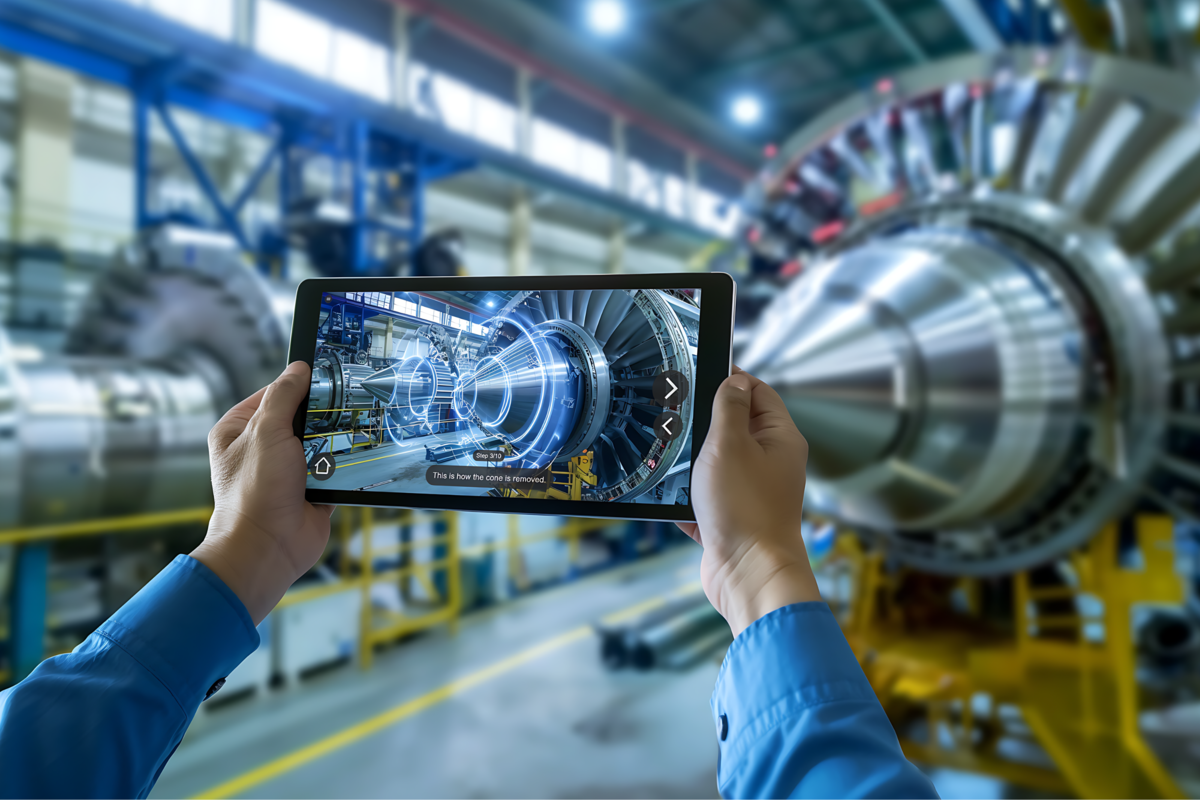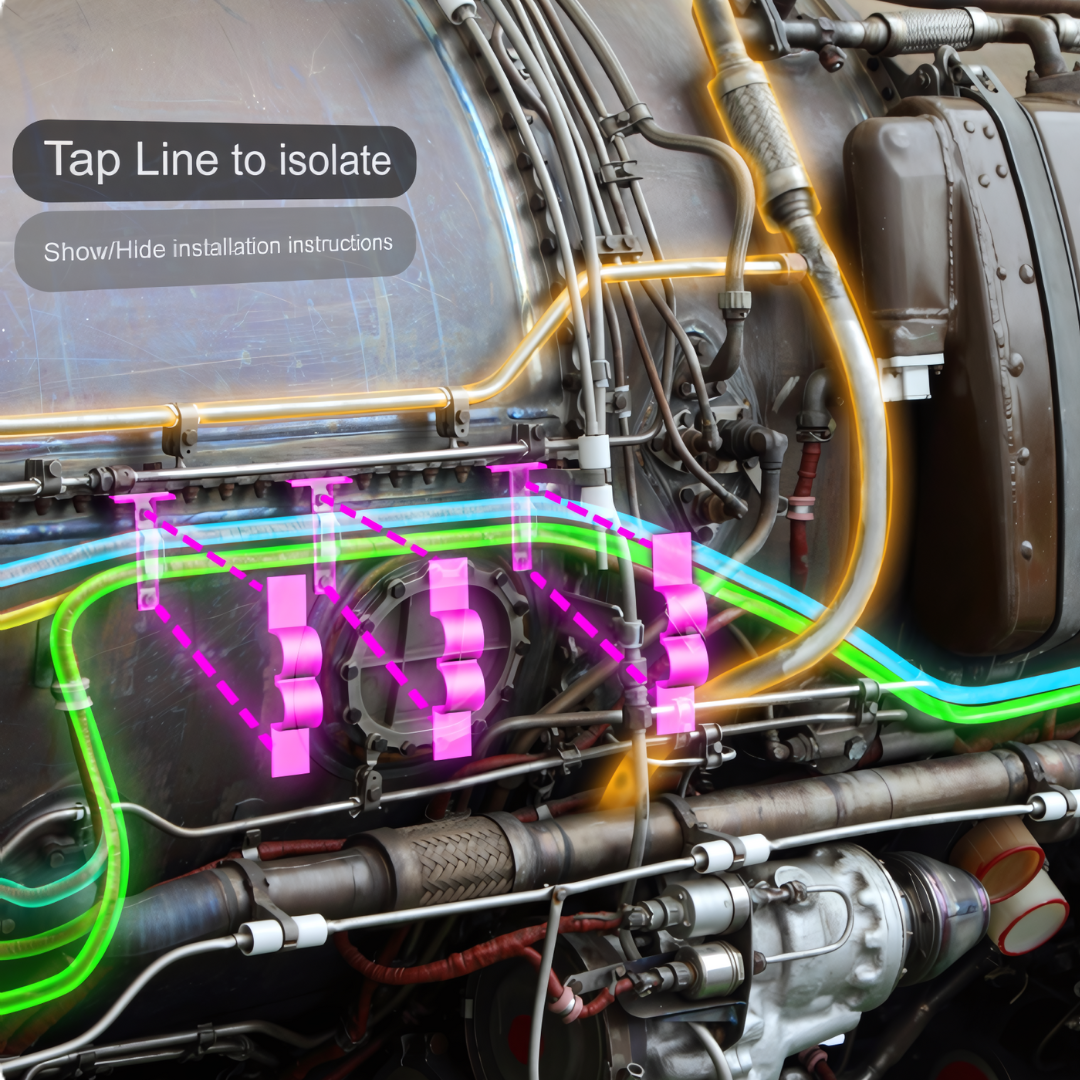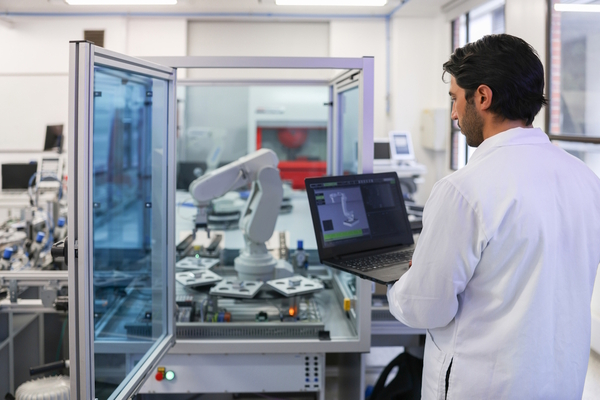The future of augmented reality: Beyond entertainment to enterprise productivity
The future of augmented reality: Beyond entertainment to enterprise productivity

For many years, augmented reality (AR) was often perceived as a technology primarily intended for consumer entertainment. From interactive games such as Pokémon Go to immersive social media filters, AR captivated the public imagination with its potential for fun and engagement. However, AR has gradually transcended its roots in entertainment, finding a burgeoning place within the enterprise as a powerful productivity tool. This evolution has significant implications for the future of AR, marking its transition from novelty to necessity.
A productivity force-multiplier in manufacturing
Unlike other extended reality (XR) technologies that are fully immersed in virtual worlds, AR overlays digital information onto the real world, allowing users to interact with both virtual and physical objects simultaneously. This is particularly useful in fields such as manufacturing, where understanding the physical context is crucial. AR has achieved a level of fidelity that can match manufacturing requirements in highly precise industries such as aerospace, aviation, medical devices and semiconductors.
In the enterprise environment, AR also provides “enhanced practicality” – the capability to integrate with existing enterprise systems in real time to improve productivity, efficiency and collaboration at enterprise scale.
For example, with AR technicians can see overlaid instructions on machinery while working on the shop floor, using a hands-free device. AR instructions can not only guide the user but also indicate if a task was completed correctly and then record that information through existing systems that document completion, significantly improving task performance and accuracy while reducing downtime, errors and paperwork.

Enhancing training and education through contextual learning
Another impactful application of AR in the enterprise is in the realm of training and education. Traditional training methods, which often involve lectures or manual instructions, can be time-consuming and less effective in conveying complex information. AR transforms training by providing interactive, immersive experiences that cater to various learning styles.
For example, AR can simulate real-world scenarios for trainees in fields such as aviation, military or emergency services, allowing them to practice and hone their skills in a controlled, risk-free environment. This hands-on approach not only accelerates learning but also helps in retaining knowledge better than conventional methods.
In educational institutions, AR allows students to see and interact with digital content in the real world, making learning more relevant and engaging. For instance, history students can view AR overlays of ancient structures on current landscapes.
Unlike VR, which often requires specialised equipment, AR can be also accessed through commonly available devices such as smartphones and tablets, making it more scalable and accessible for widespread educational use.
AR in remote collaboration
The Covid-19 pandemic accelerated the adoption of remote work and highlighted the limitations of traditional communication tools. AR offers a solution by enabling more immersive and effective remote collaboration. With AR, teams can jointly interact with 3D models, annotate real-world environments and visualise data collaboratively, regardless of their physical location.
For instance, in the architecture and construction industries, AR allows stakeholders to visualise building designs in the real environment, identify potential issues and make adjustments before construction begins. This collaborative approach not only dramatically saves time and costs but also enhances the quality of the final product.
Challenges and future directions
Despite its promising applications, AR technology faces several challenges that need to be addressed to realise its full potential in the enterprise. Fortunately, these challenges are largely being addressed.
Hardware improvements are essential for making AR devices more comfortable, affordable and capable of running sophisticated applications. Current AR devices, such as Microsoft HoloLens, are still relatively expensive and may not be accessible to all enterprises. But AR is not limited to wearables: users can access it on any mobile device and grow into more advanced hardware over time.
As technology advances, we can expect more cost-effective and user-friendly devices to enter the market. For example, in February 2024 the Apple Vision Pro launched to much fanfare in the consumer market, offering a heightened level of user experience and personal productivity and setting the bar high for ease-of-use that will influence the market for all headset makers. While still a relatively highly priced device, the UI of the Apple Vision Pro may translate to powerful experiences in the enterprise, and increased competition can lower costs across all devices over time.
Data security is another critical issue, especially given the sensitive information that AR applications can access. Ensuring robust security measures and developing industry standards will be crucial in gaining the trust of businesses and users. Standardisation is also necessary to ensure compatibility and interoperability between different AR systems and applications. This will facilitate wider adoption and integration of AR into existing enterprise workflows. For these reasons it’s become imperative for AR to become fully integrated into the current systems of an enterprise, such as manufacturing execution systems (MESes), product lifecycle management (PLM) systems, and learning management systems (LMSes). AR solutions must map to compliance and security frameworks such as HIPAA, SOC 2, NIST, GDPR and on-premises deployment.
A new way of working
By enhancing productivity, improving training and education and enabling immersive remote collaboration, AR is becoming an indispensable tool in the enterprise. As hardware advances, data security measures improve, and standardisation efforts progress, AR’s role in the professional world will continue to expand. This transition signifies not just a technological evolution, but a paradigm shift in how businesses operate and innovate.
AR is on the cusp of a transformation that will embed it deeply into the fabric of enterprise operations, driving productivity and innovation across various sectors. As AR continues to evolve, its potential to reshape industries and enhance human capabilities becomes increasingly apparent, heralding a future where augmented reality is an integral part of our professional lives.
In this simulation of a typical aerospace manufacturing workflow, augmented reality superimposes location indicators for fasteners. AR provides the proper placement, eradicating the need to take measurements, defer to 2D drawings or use a Mylar overlay, all of which can lead to errors. The technician simply follows the prompts and marks completion of a task. Integration with enterprise systems, such as a manufacturing execution system (MES), enables immediate documentation of a completed task and accelerates productivity by removing post-task paperwork.
Learn how AR is transforming the enterprise by enabling unprecedented levels of productivity and closing the industrial skilled labour gap. Featuring insights from AR thought leaders and innovators from Northrop Grumman, Rolls Royce and Mitsubishi Heavy Industries. get.scopear.com/closing-the-industrial-skilled-talent-gap
By Aaron DeYonker, VP Product, Scope AR

Business Reporter Team
Most Viewed
Winston House, 3rd Floor, Units 306-309, 2-4 Dollis Park, London, N3 1HF
23-29 Hendon Lane, London, N3 1RT
020 8349 4363
© 2024, Lyonsdown Limited. Business Reporter® is a registered trademark of Lyonsdown Ltd. VAT registration number: 830519543





